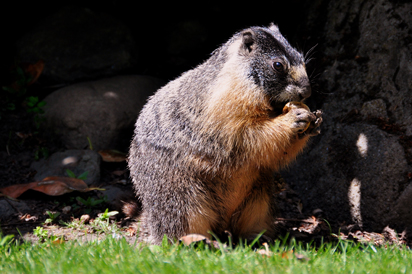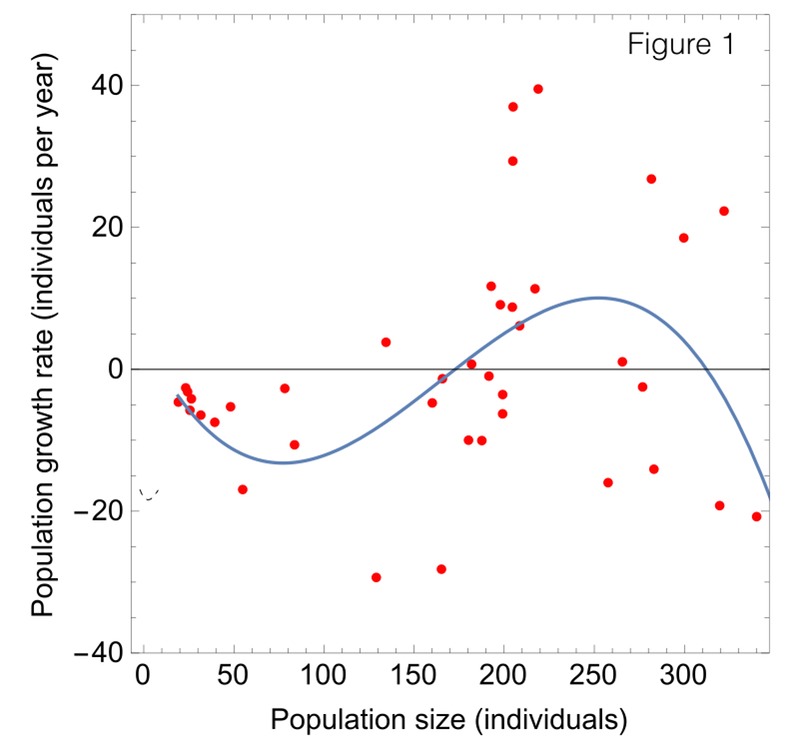
The Vancouver Island Marmot is a large species of rodent that lives exclusively on Vancouver Island in British Columbia, Canada. Although the number of individuals of this species was once in the hundreds, its population size declined to below 50 individuals around 2001 as a result of habitat destruction.
The species is now in serious danger of extinction and studies have been undertaken to assess the likelihood that the population will grow back to its previous size. To this end, in each of several years, researchers measured the population size as well as the population growth rate (the change in population size from one year to the next). They then plotted the growth rate against population size and fitted a curve to the data. Figure 1 presents their data.

Each red dot corresponds to a particular year, and the solid curve is a cubic polynomial fitted to the data (the data can be downloaded from the link on the left). This curve is an example of the function f(N) from Example 4.1.6.
Although there is a lot of scatter around the fitted curve in Figure 1, it shows that the expected population growth rate is negative for population sizes between 0 and approximately 170. This reveals a clear Allee effect. The Allee effect is extremely worrisome from a conservation perspective because it suggests that, without intervention, the population will decline to extinction once it drops below about 170 individuals. The researchers of this study were also able to show that the reason for the Allee effect is the difficulty that individuals have in finding mates once the population size gets small.
We can use an analysis like that in Example 4.1.6 to see that, even if the population size is boosted above 170 individuals, recovery is likely to be very slow. In particular, the curve in Figure 1 is given by the function
As in Example, 4.1.6, you can verify using the Closed Interval Method on the domain shown in Figure 1, that f(N) has a maximum value of approximately 9.6 individuals per year when the population size is approximately N = 250. In other words, even in the best-case scenario the population is predicted to increase by less than 10 individuals per year.
References
Data are from Brashares, J.S., J.R. Werner, and A.R.E. Sinclair. 2010. Social ‘meltdown’ in the demise of an island endemic: Allee effects and the Vancouver Island marmot. Journal of Animal Ecology 79:965-973